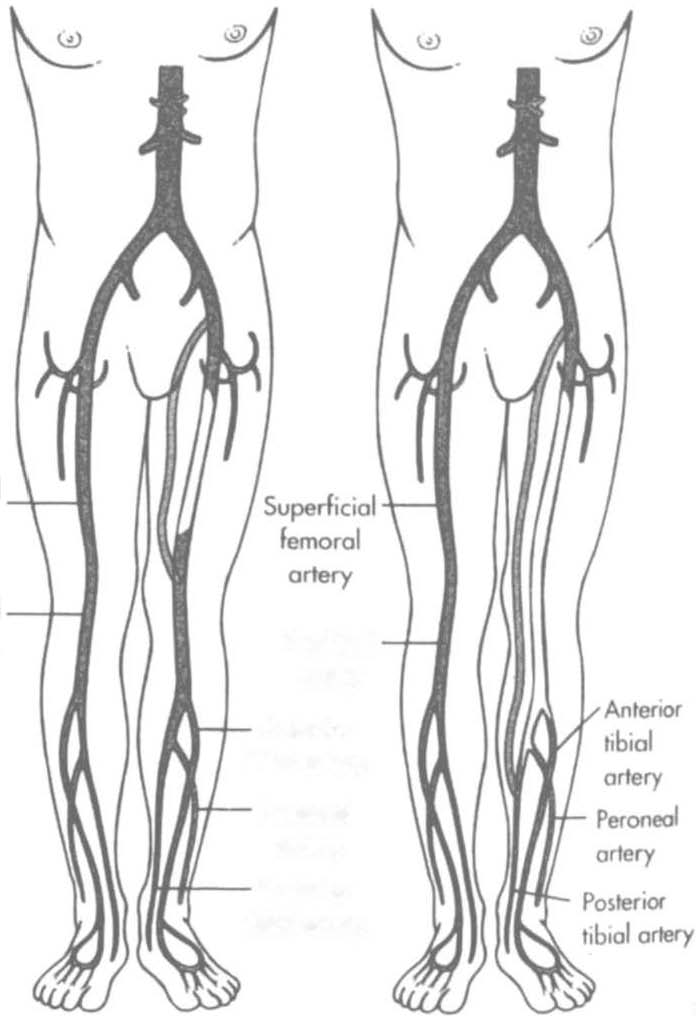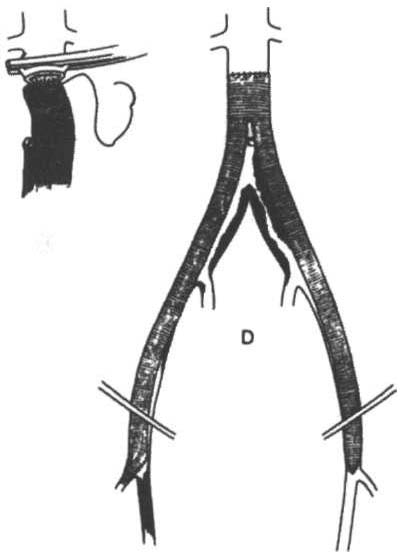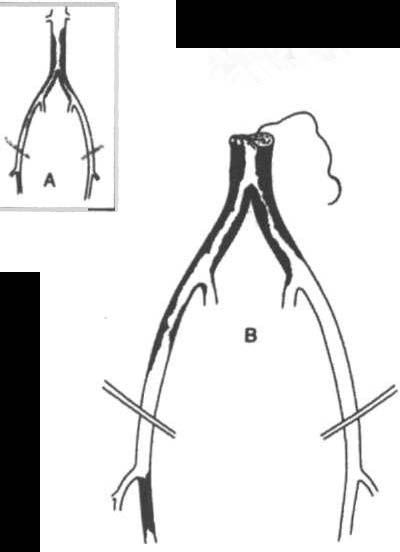i bc27f85be50b71b1 (128 page)
Read i bc27f85be50b71b1 Online
Authors: Unknown


422 AClITE CARE HANDBOOK FOR PHYSICAL THE.RAI)ISTS
Clinical Tip
•
If the patient is receiving blood products, the physical
thetapist should observe the patient for signs or symptoms, or both, of transfusion reaction before initiating physical therapy intervention.
•
Depending on the medical Status of the patient, the
therapist may defer out of bed or vigorous activities until
the transfusion is complete. On average, the transfusion of
a unit of blood takes 3--4 hours.
•
Defer physical therapy intervention during the first 15
minutes of a blood transfusion as most blood transfusion
reactions occur within this time frame.
•
During a blood transfusion, vital signs are usually taken
every 15-30 minutes by the nurse and posted at the bedside.
Vascular Surgical Procedures
Surgical management of coronary vascular disorders, such as angioplasty, arthrectomy, and stent placement, is described in Chapter I under Percutaneous Revascularization Procedures. These same techniques are also used in peripheral arteries rather than coronary arteries. This section therefore concentrates on embolization therapy, transcatheter thrombolysis, endarterectomy, bypass grafting, and aneurysm repair and replacement with synthetic grafts. Patients
who undergo percutaneous catherization procedures will have similar precautions and considerations, as described earlier in the Invasive Vascular Studies section.
Embolization Therapy
Embolization" therapy is the process of purposely occluding a vessel with Gclfoam, coils, balloons, polyvinyl alcohol, and various glue-like agents, which are injected as liquids and then solidify in
the vessel. Embolization therapy is performed with a specialized
intravascular catheter after angiographic evaluation has outlined
the area to be treared.
·The term embolization is general and can refer to a pachologic occlusion of
a vessel by far, air, or a dislodged portion of a thrombus, or to the therapeutic
procedure described in this section. The context in which embolization is discussed must be considered to avoid confusion.

VASCULAR SYSTEM AND HEMATOLOGY
423
Indications for embolization therapy include disorders charaererized by inappropriate blood flow, such as AVMs or, less commonly, persistent hemoptysis.
Complications of embolization therapy include tissue necrosis,
inadvertent embolizarion of normal tissues, and passage of embolic
materials through arteriovenous communications.23
Transcatheter Thrombolysis
Transcatheter rhrombolysis is the process of directly infusing
thrombolytic agents (generally, urokinase) into occluded vessels
via percutaneous catheter access. Once the catheter is inserted and
placed in the area of occlusion, the catheter is left in place for
extended periods of time, as long as 3 days, to allow the clot to be
properly lysed. This procedure may also include angioplasty, if
warranted, to open a srenotic area. By injecting the thrombolytic
agent into the area of occlusion, transcarheter thrombolysis has
less systemic complications of hemorrhage compared to intravenous infusion of thrombolytic agents.s
Peripheral Vascular Bypass Grafting
To reperfuse an area that has been ischemic from peripheral vascular disease, two general bypass grafting procedures (with many specific variations of each type) can be performed. The area of vascular occlusion can be bypassed with an inverted portion of the saphenous vein or with a synthetic material, such as Gore-Tex,
Dacron, or Lycra. (The synthetic graft is referred to as a prosthetic
graft.) Vascular surgeons generally describe and illustrate in the
medical record what type of procedure was performed on the particular vascular anatomy. The terminology used to describe each bypass graft procedure indicates which vessels were involved. (For
example, a fem-pop bypass graft involves bypassing an occlusion
of the femoral artery with another conduit to the popliteal artery
distal ro rhe area of occlusion.) After a bypass procedure, patients,
depending on premorbid physiologic status and extent of surgery,
require approximarely 24-48 hours to become hemodynamically
stable and are usually monitored in an intensive care unit setting.
Figures 6-3 and 6-4 illustrate two vascular bypass procedures.
Complications that can occur after bypass grafting include the
following':
• Hemorrhage (at graft site or in gastrointestinal tract)
•
Thrombosis



424 ACUTE CARE HANDBOOK FOR PHYSICAL TI-IERAI>JSTS
femoral
ortery
artery
Popliteal
artery
Anterior
tibial artery
Peroneal
artery
Posterior
tibial artery
A
B
Figure 6-3. A. Femoral-popliteal bypass graft around all occluded superficial
femoral artery. n. Femoral-posterior tibial bypass graft around occluded
superficial femoral, popliteal. and proximal tibial arteries. (With permission
from SM Lewis, MM Heitkemper, SR Dirksen fedsf. Medical·Surgical Nurs·
ing. Assessment and Management of CUneal Problems/5th ed]. St. LOllis:
Mosby, 2000;990.)




